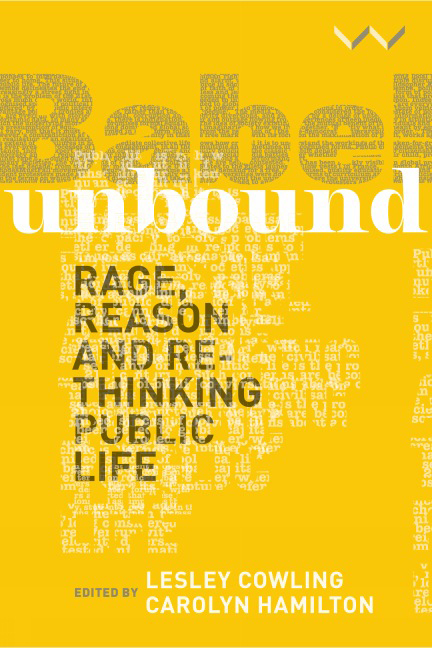Book contents
- Frontmatter
- Contents
- Acknowledgements
- Introduction
- Chapter 1 Rethinking Public Engagement
- Chapter 2 Tracing Public Engagements in Visual Forms
- Chapter 3 Media Orchestration in the Production of Public Debate
- Chapter 4 Fluid Publics: The public-making power of hashtags in digital public spaces
- Chapter 5 ‘Now We See Him, Now We Don’t’: The media and the ‘Black Pimpernel’
- Chapter 6 Archive and Public Life
- Chapter 7 Iconic Archive: Timbuktu and its manuscripts in public discourse
- Chapter 8 The Politics of Representation in Marikana: A tale of competing ideologies
- Chapter 9 Art-Rage and the Politics of Reconciliation
- Chapter 10 Anger, Pain, and the Body in the Public Sphere
- Contributors
- Index
Chapter 9 - Art-Rage and the Politics of Reconciliation
Published online by Cambridge University Press: 10 September 2020
- Frontmatter
- Contents
- Acknowledgements
- Introduction
- Chapter 1 Rethinking Public Engagement
- Chapter 2 Tracing Public Engagements in Visual Forms
- Chapter 3 Media Orchestration in the Production of Public Debate
- Chapter 4 Fluid Publics: The public-making power of hashtags in digital public spaces
- Chapter 5 ‘Now We See Him, Now We Don’t’: The media and the ‘Black Pimpernel’
- Chapter 6 Archive and Public Life
- Chapter 7 Iconic Archive: Timbuktu and its manuscripts in public discourse
- Chapter 8 The Politics of Representation in Marikana: A tale of competing ideologies
- Chapter 9 Art-Rage and the Politics of Reconciliation
- Chapter 10 Anger, Pain, and the Body in the Public Sphere
- Contributors
- Index
Summary
Art in South Africa has become a site of intense and visceral race and class political antagonisms. It has catalysed debate, contestation and public discussion. In particular, public art and statues that echo the agonies of colonial and apartheid South Africa have sparked black public outrage and its proverbial opposite, white indignant anger. Art appears to have become a conduit for channelling frustrations with elusive reconciliation, the patronising expression of rainbowism and the impossible public dialogue about transforming post-apartheid South Africa. The discourse about art in public spaces, it would seem, becomes a proxy for other issues.
After students removed a prominent statue of colonialist Cecil John Rhodes from the University of Cape Town (UCT) in 2015, Rhodes Must Fall activist and student Ntokozo Dladla noted that the visual environment (buildings, art and statues) of the campus had become the ‘focal point’ for the raising of wider political issues: ‘The systems and the processes in place here have worked in such a way to exclude us from feeling as though we are part of this university. We feel alienated … The statue just dramatises those feelings.’ This feeling of profound alienation not only characterised many students’ experience of campus, but also the zeitgeist of an inequitable post-1994 South Africa, which still resembles racially partitioned apartheid South Africa.
On 15 February 2016, a protest based on student housing on the UCT campus took the form of the installation of a shack at the foot of the Jameson steps, on Residence Road, near where the Rhodes statue stood. When the university management demanded that the shack, dubbed ‘Shackville’, be removed from the road where it interrupted traffic flow, students refused. The university management sent police and private security to demolish the shack and disperse the crowd. This exacerbated the situation and, in anger, protesting students retaliated by gathering paintings from nearby residences (Fuller and Smuts halls) and burning them in the square near Residence Road. Some of the students, referred to as the Shackville Five, were arrested. During their court hearing, these students called the intervention of installing a shack on campus an ‘artistic form of protest’.
- Type
- Chapter
- Information
- Babel UnboundRage, Reason and Rethinking Public Life, pp. 215 - 238Publisher: Wits University PressPrint publication year: 2020



